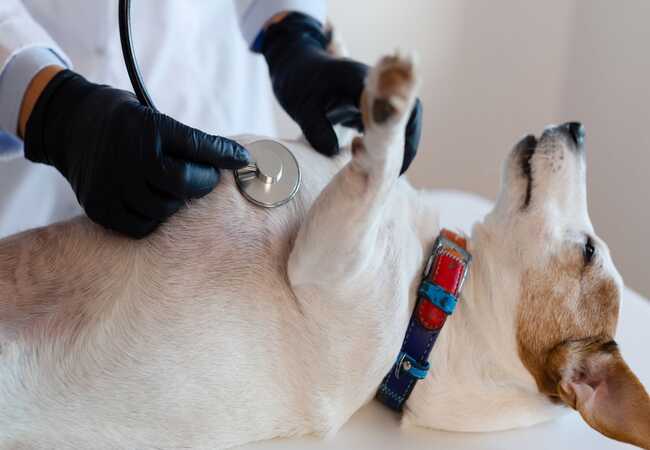Vet’s 2025 Guide to Canine Scoliosis 🩺 Detection, Treatment & Home Care

In this article
Vet’s 2025 Guide to Canine Scoliosis 🩺 Detection, Treatment & Home Care
By Dr. Duncan Houston BVSc
💡 What Is Scoliosis?
Scoliosis is an abnormal sideways curvature of the spine seen in dogs 🐶. It can be congenital—due to malformed vertebrae—or acquired, from trauma or disease.
🌍 Who’s at Risk & What Causes It?
- Congenital cases: often seen in brachycephalic breeds (e.g., French bulldogs, pugs) due to hemivertebra or block vertebra.
- Acquired scoliosis: may follow spinal injuries, infections, inflammation such as syringomyelia, or intervertebral disc disease.
🚩 Recognizing Signs & Symptoms
- Visible spinal curve when viewed from behind.
- Back pain or sensitivity around the curve.
- Unwillingness to play, difficulty rising, or altered gait/wobbliness.
- Neurologic signs—weakness, ataxia, incontinence—if spinal cord is compressed.
- Rarely are internal organs in severe curves.
🧪 How Veterinarians Diagnose It
- X‑rays: reveal lateral curve and vertebral malformations.
- Advanced imaging: MRI or CT identifies spinal cord compression or underlying disease.
- Neurological exam: checks reflexes, sensation, and gait to detect compression.
- History: congenital onset or past spinal trauma/infection clues doctors.
🩺 Treatment Options in 2025
1. Conservative Management
- Mild, pain-free cases may need no treatment.
- Provide NSAIDs or analgesics for discomfort and restricted activity/rest.
- Physical rehab—physiotherapy, hydrotherapy, core strengthening—can help support spinal stability.
2. Bracing & Mobility Aids
- Orthopedic back braces can stabilize mild-to-moderate curves.
- Dog wheelchairs/harnesses assist mobility when paralysis or severe mobility issues arise.
3. Surgical Correction
- Decompression or stabilization surgery is important when spinal cord compression or neurologic deficit is present.
- Early surgery offers better prognosis before permanent spinal cord damage.
- Surgery may involve hemivertebra removal, spinal fusion, or stabilization implants.
📈 Prognosis & Complications
- Mild curves often remain stable and asymptomatic.
- If untreated and progressive, severe scoliosis can compress spinal cord, leading to neurologic deficits or pain.
- In French bulldogs, scoliosis may alter intervertebral disc disease patterns—careful monitoring is necessary.
- Early intervention with appropriate support improves long-term quality of life.
🚫 Prevention & Monitoring
- Breed screening for congenital vertebral malformations to inform breeding choices.
- Avoid high-risk jumping or trauma in puppies, and protect backs during growth.
- Regular veterinary checkups to monitor curve progression and neurological status.
🏡 Ask A Vet Home‑Care Support
- 🗓️ Reminders: medication schedules, rehab exercises, vet rechecks.
- 📸 Upload photos/videos: gait, posture, signs of pain for remote assessment.
- 📊 Track: mobility score, pain indicators, curve angle measured over time.
- 🔔 Alerts: worsening gait, new weakness, incontinence, or pain flare-ups.
- 📚 Resources: tutorials on brace use, physiotherapy techniques, and safe handlers.
🔑 Key Takeaways
- Scoliosis in dogs is rare but can impact pain and mobility if severe.
- X‑rays are the foundation of diagnosis; MRI/CT used for spinal cord evaluation.
- Most mild cases are managed conservatively; severe cases may need surgery.
- Bracing and mobility aids help maintain quality of life in affected dogs.
- Ask A Vet enhances owner confidence via monitoring, reminders, and remote vet support.
🩺 Final Thoughts ❤️
In 2025, early detection and tailored care will help dogs with scoliosis lead comfortable lives. Advances in veterinary imaging, rehab, and supportive devices—alongside robust at-home support through the Ask A Vet app—mean even curved spines don’t limit joy. If you notice spinal curves or changes in gait, reach out to your vet and use Ask A Vet to guide your pup’s best life. 🐾✨
Visit AskAVet.com and download the Ask A Vet app to set up reminders, upload posture and mobility videos, track symptoms, schedule virtual check-ins, and get real-time guidance from your vet—right from home. 📲






